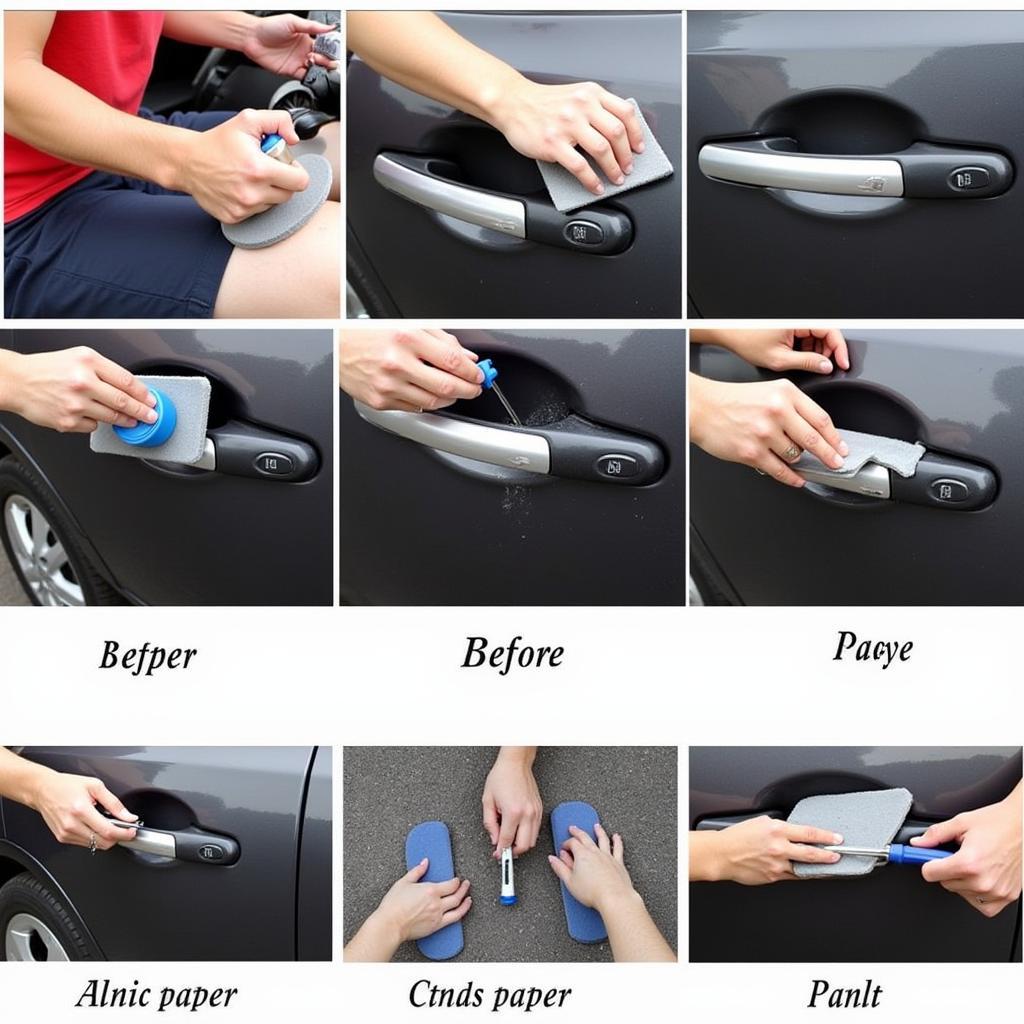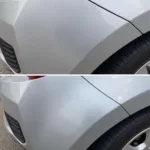Car interior paint repair can transform a worn-out cabin into a pristine space. Whether it’s scuffs on the door panels, scratches on the dashboard, or fading on the center console, addressing these imperfections can significantly enhance your driving experience and the resale value of your vehicle. This guide dives deep into the art and science of car interior paint repair, providing you with the knowledge and resources to achieve professional-looking results.
Understanding Car Interior Paint Repair
Car interior paint repair isn’t just about slapping on some paint. It’s a meticulous process that involves preparing the surface, choosing the right paint, applying it correctly, and finishing for a seamless look. Before you begin, understand the type of material you’re working with, be it plastic, vinyl, leather, or other materials. Each material requires a specific approach and type of paint. For specific repairs like plastic components, check out our guide on car interior plastic paint repair. Shortly after this introduction, you’ll find a wealth of information about choosing the correct paint for your car’s interior.
After cleaning the area to be repaired, the next step is usually to apply a primer. This helps the paint adhere properly and creates a uniform base. Then, apply thin coats of paint, allowing each coat to dry before applying the next. Remember, patience is key to achieving a smooth, factory-like finish. For those interested in more extensive repairs and enhancements, our guide on car detailing and paint repair offers valuable insights.
Choosing the Right Paint for Your Car’s Interior
Selecting the appropriate paint is paramount for successful car interior paint repair. Several types of paints are available, each with its pros and cons. These include vinyl and plastic paints, leather paints, and specialized interior fabric paints. It’s vital to choose a paint that’s specifically designed for car interiors, as these are formulated to withstand the harsh conditions inside a vehicle, such as temperature fluctuations and UV exposure. If you’re dealing with leather, you’ll find our guide on leather car paint repair particularly helpful.
Consider factors like color matching, durability, and finish when selecting your paint. For precise color matching, consult your vehicle’s owner’s manual or contact a dealership. You can also find car interior repair paint specifically designed for color matching. A durable, UV-resistant paint will ensure the repair lasts and resists fading over time. Lastly, consider whether you want a matte, satin, or gloss finish.
Repairing Different Interior Surfaces
Plastic and Vinyl
Plastic and vinyl are the most common materials found in car interiors. Scratches, scuffs, and fading are common issues. Use a fine-grit sandpaper to smooth the damaged area before applying a specialized plastic or vinyl paint. Several thin coats are better than one thick coat.
Leather
Leather requires a more delicate approach. Clean the leather thoroughly before applying a leather-specific paint. Use a soft brush or applicator to apply the paint in thin, even coats. Conditioning the leather after the repair will help maintain its suppleness and prevent cracking.
Fabric
Repairing fabric upholstery can be tricky. Fabric paints are available, but matching the color and texture perfectly can be challenging. For more severe fabric damage, consider consulting a professional upholsterer.
DIY vs. Professional Car Interior Paint Repair
While DIY car interior paint repair can be a cost-effective solution for minor blemishes, more complex repairs might require professional expertise. Professionals have access to advanced tools and techniques that can deliver flawless results. They also possess the knowledge and experience to handle different materials and intricate repairs.
Conclusion
Car interior paint repair is a worthwhile endeavor that can significantly improve the aesthetics and value of your vehicle. By following the proper techniques and choosing the correct materials, you can achieve impressive results. Whether you opt for a DIY approach or seek professional help, addressing those interior blemishes will undoubtedly enhance your driving experience. If you’re facing issues like tree sap damage on your car’s exterior, check out our guide on how to repair tree sap damage paint on car for effective solutions. Remember, a well-maintained interior speaks volumes about the care and attention you give to your vehicle.
FAQ
- What type of paint should I use for my car’s dashboard?
- How do I match the paint color to my car’s interior?
- Can I repair a tear in my leather seat with paint?
- What is the best way to remove scuff marks from vinyl?
- How long does it take for car interior paint to dry?
- Is it necessary to use a primer before painting car interior plastic?
- What are the common mistakes to avoid during car interior paint repair?
Situations
- Faded dashboard: Sun exposure can cause the dashboard to fade and crack. Car interior paint repair can restore its original color and appearance.
- Scratched door panels: Accidental bumps and scrapes can leave unsightly marks on the door panels. Paint repair can effectively conceal these imperfections.
- Worn-out center console: The center console is prone to wear and tear. Paint repair can revitalize its appearance.
Related Articles
- Car Interior Plastic Paint Repair
- Car Detailing and Paint Repair
Need help? Contact us via WhatsApp: +1(641)206-8880, Email: cardiagtechworkshop@gmail.com. We have a 24/7 customer support team.


